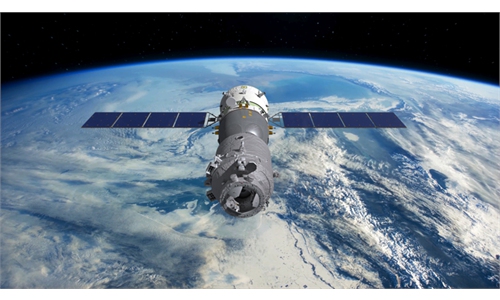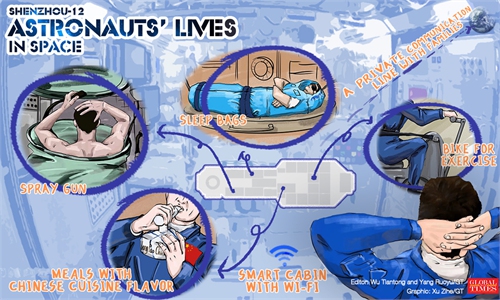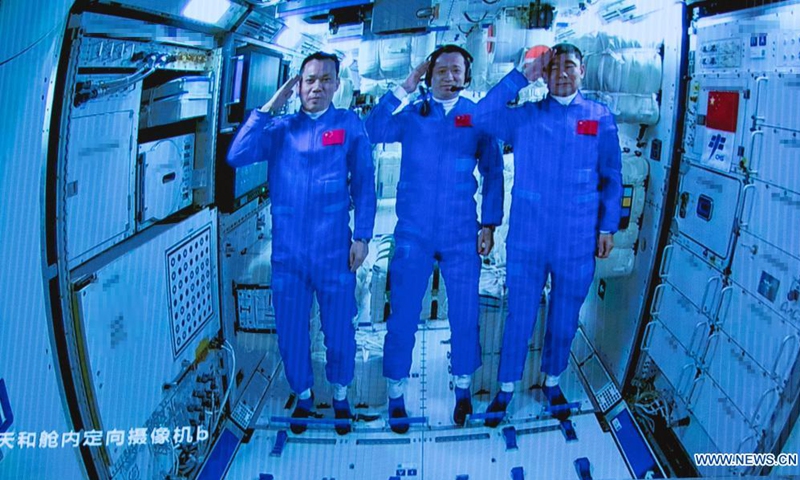
Screen image captured at Beijing Aerospace Control Center in Beijing, capital of China, June 17, 2021 shows three Chinese astronauts onboard the Shenzhou-12 spaceship saluting after entering the space station core module Tianhe. Photo: Xinhua
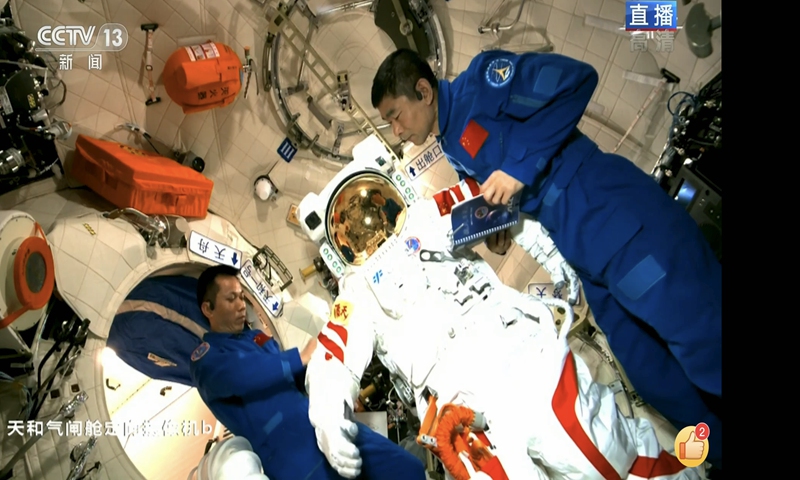
Photo: screenshot from CCTV
Having moved into and spent two weeks in their new space home, the Shenzhou-12 taikonauts are believed to soon carry out their first long-duration extravehicular activity (EVA), more commonly known as a spacewalk. Citing cutting edge technology applied in the training process, the new spacesuit and smart robotic arms system, observers said they are very optimistic over the success of the admittedly high-stakes feat.
Shenzhou-12 manned spaceflight mission participants revealed in a tribute to the Communist Party of China released by state broadcaster Central China Television on Thursday that now the whole system is busy preparing for the taikonauts' first long spacewalk.
Considering that Sun Jun, the mission chief of the space station project at the Beijing Aerospace Flight Control Center, said on June 23 following President Xi Jinping's space-ground call with the crew earlier the same day, that the first spacewalk is expected to take place in some 10 days, analysts said that it could take place on the upcoming weekend at the soonest.
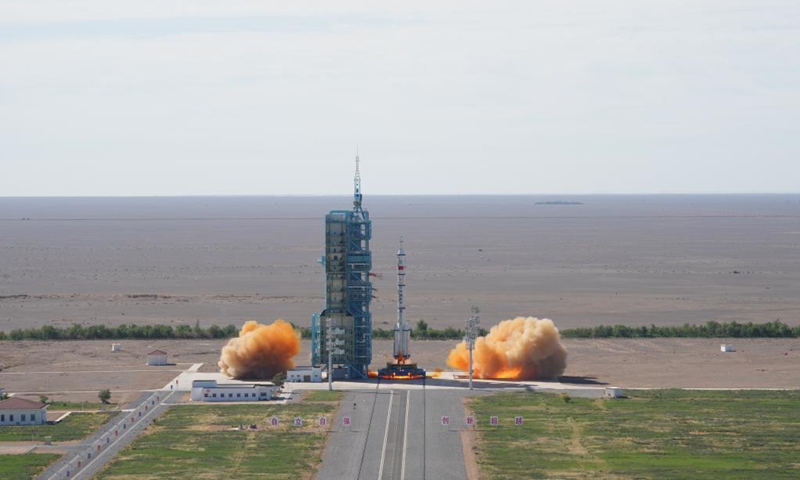
The crewed spacecraft Shenzhou-12, atop a Long March-2F carrier rocket, is launched from the Jiuquan Satellite Launch Center in northwest China's Gobi Desert, June 17, 2021. (Xinhua/Li Gang)
Compared to China's first spacewalk executed by Zhai Zhigang during the Shenzhou-7 mission in 2008, which lasted for some 20 minutes, two of the three Shenzhou-12 crew are expected to remain outside for hours. They will carry out actual space station construction and appliance testing works while outside the cabin, rather than mere technology verification like during Zhai's spacewalk, which will be a highlight but challenging for the crew, Pang Zhihao, a Beijing-based senior space expert and retired researcher from the China Academy of Space Technology, told the Global Times.
Zhou Jianping, an academician at the Chinese Academy of Engineering and the chief designer of China's manned space program, told CCTV earlier that huge improvements and adjustments have been made to the new spacesuits compared to the previous Shenzhou-7 ones, and they can support long-duration activities outside the cabin.
In the livestream footage of the ground-space call on June 23, taikonauts Liu Boming and Tang Hongbo were seen making adjustments to a spacesuit expected to be used for future extravehicular activities. This first view marked the new spacesuit's debut to the public.
Nie Haisheng, the crew leader, was operating the space station system at the working station in the main compartment.
Two pieces of 100-kg spacesuit for spacewalk were sent to the Tianhe space station core module prior to the arrival of the crew in a Tianzhou-2 cargo spacecraft.
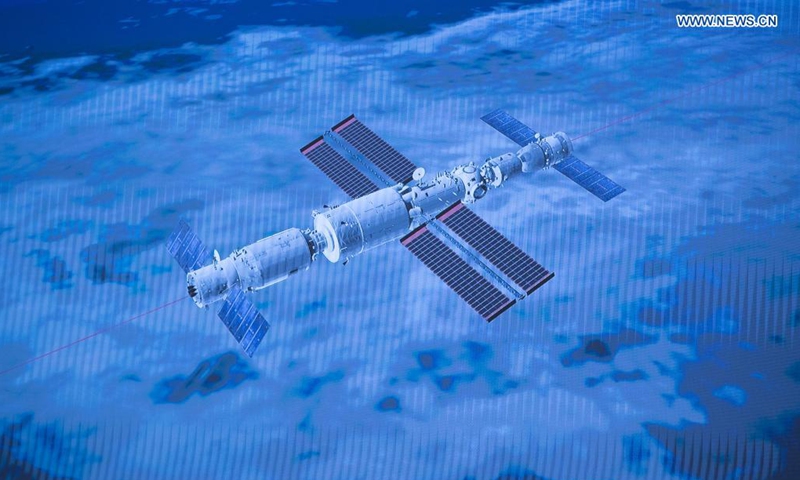
Screen image captured at Beijing Aerospace Control Center in Beijing, capital of China, June 17, 2021 shows China's Shenzhou-12 manned spaceship having successfully docked with the space station core module Tianhe. Photo: Xinhua
Mission insiders have previously told the Global Times that all three taikonauts have been well trained, meaning they all are capable and ready for outside-cabin operations. Many observers predicted that Liu, who participated in the Shenzhou-7 mission in 2008 and assisted Zhai to complete the country's first spacewalk, is likely to play a key role this time.
Liu had also previously told media that the new suit is more comfortable, and easier to move around in than old versions.
The Chinese space station has also been equipped with robotic arms that can be stretched to 15 meters long, and these are expected to play a vital role in building the space station in orbit, Zhou said.
Dubbed the most intelligent, most complicated orbital construction system, the robotic arms will provide solid support for taikonauts' movement along the spacecraft for long hours by saving their stamina and even helping them arrange future lab modules, according to the China Manned Space Agency in open materials.
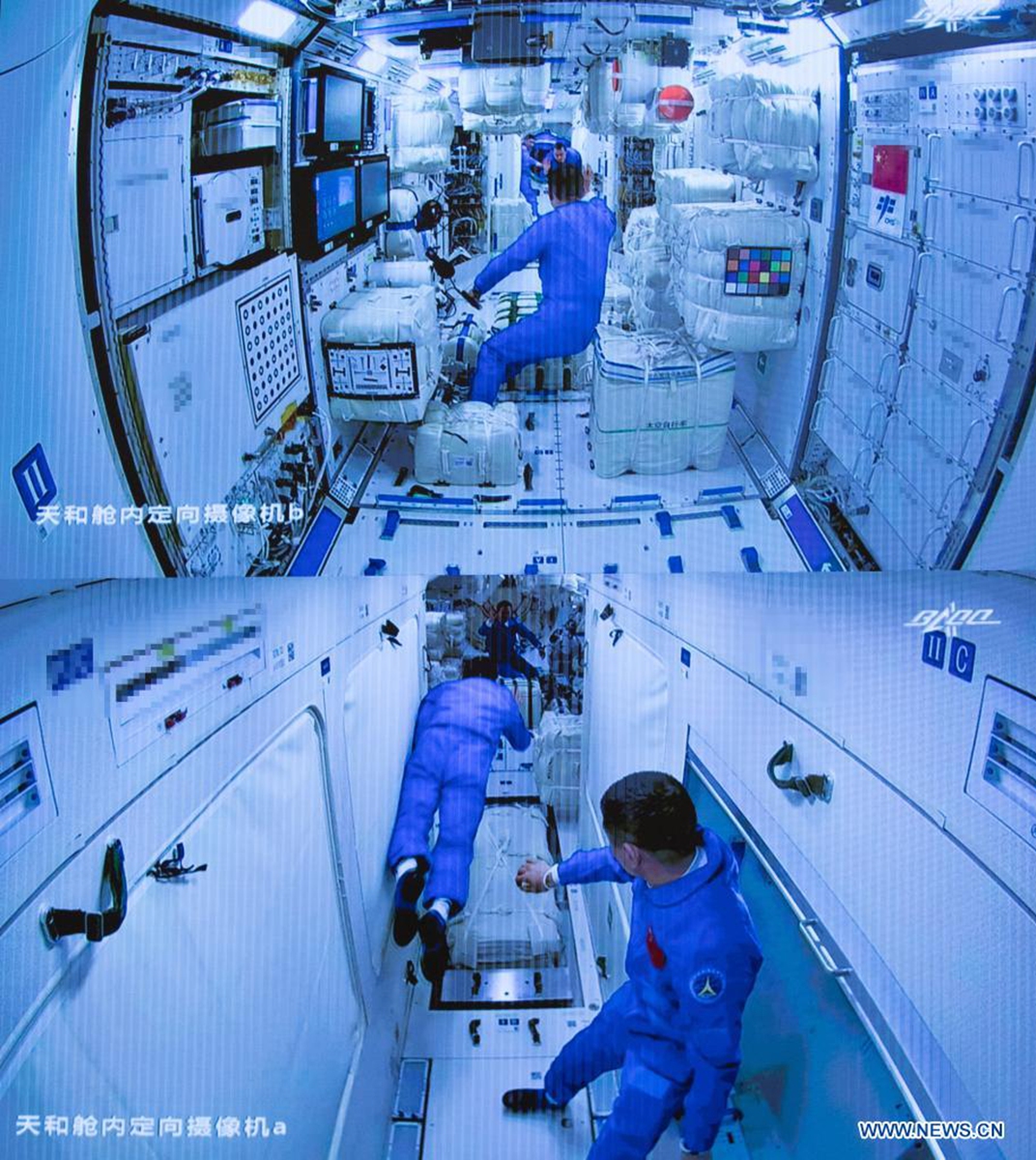
Screen image captured at Beijing Aerospace Control Center in Beijing, capital of China, June 17, 2021 shows three Chinese astronauts onboard the Shenzhou-12 spaceship entering the space station core module Tianhe. Photo: Xinhua
Commenting on joining a team for the first time with robotic arms system, Liu told the media in previous interviews that the arms will take the astronauts nearby to the working location in a big swing, which will test the system's reliability, safety and flexibility.
"I look forward to the moment of standing at the far end of the arm, looking into the vast universe and swinging with the arms…it will be just like flying," Liu said.
Also, to ensure the spacewalk mission's smooth execution, all the taikonauts have carried out solid ground training and mission preparation under comprehensive training programs and plans, according to Ji Qiming, a CMSA spokesperson.
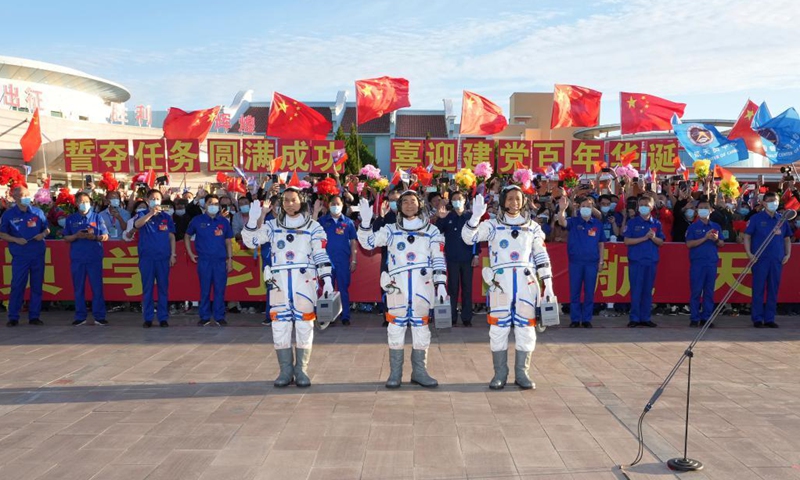
Astronauts Nie Haisheng (R), Liu Boming (C) and Tang Hongbo wave during a see-off ceremony for Chinese astronauts of the Shenzhou-12 manned space mission at the Jiuquan Satellite Launch Center in northwest China, June 17, 2021. (Xinhua/Li Gang)
Chief astronaut trainer Huang Weifen told the media that one of the most exhausting parts of the training is the underwater sessions, which try to simulate the weightless environment in space and enhance the taikonauts stamina and upper body strength. During such underwater training session, astronauts need to wear suits weighting some 200 kilograms for at least 6 hours per session.
Huang said that the underwater training standards were the same for male and female astronauts and in the end, each astronaut's upper body strength data became as good as that of professional gymnastic or canoeing athletes.
Pang also revealed that China also has Asia's largest astronaut underwater training tank, which is 23 meters in diameter and 10 meters in depth. The super-sized facility helps them train and supports larger size spacecraft training models.
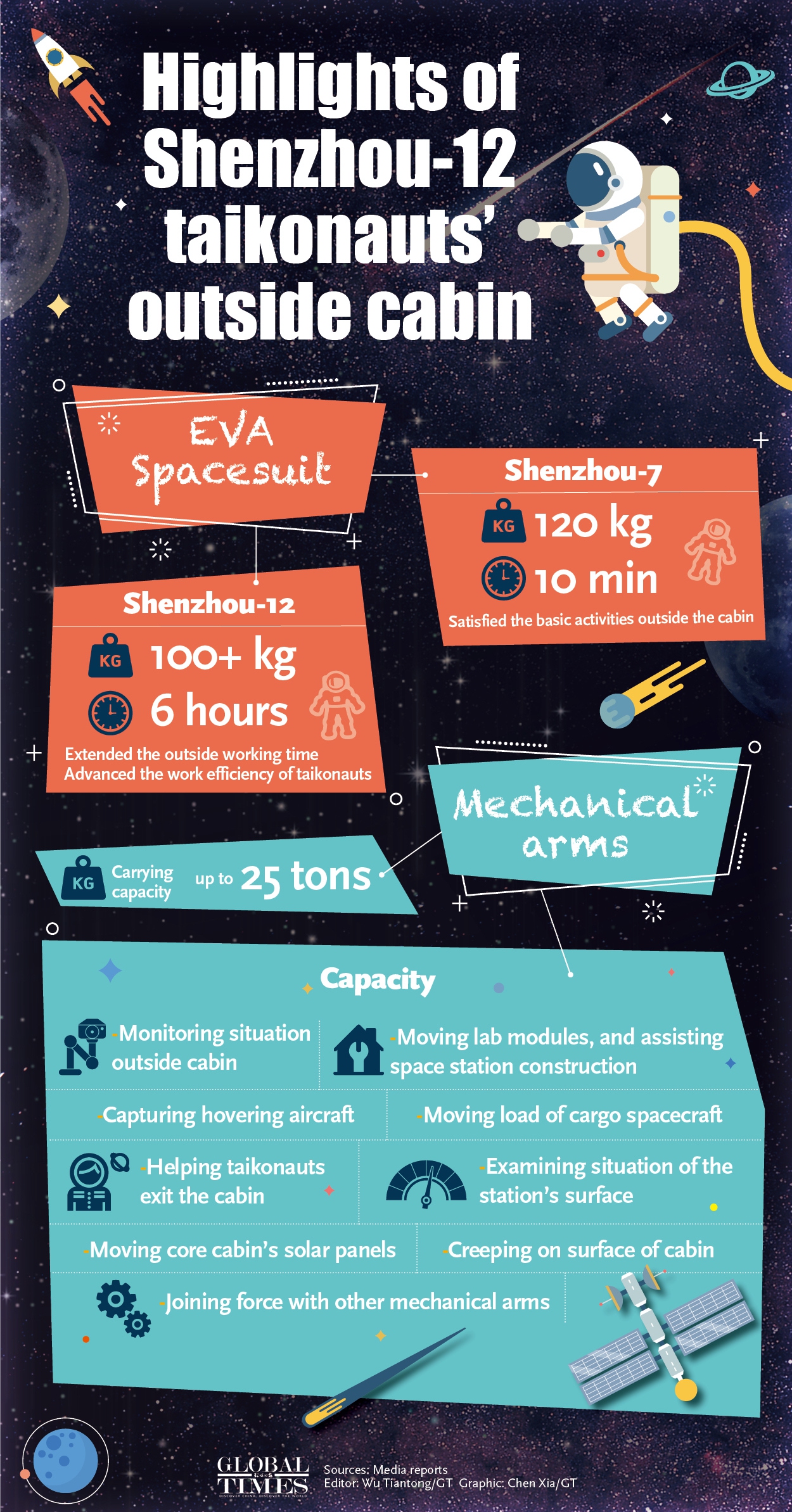
Highlights of Shenzhou-12 taikounauts' outside cabin Infographic: Wu Tiantong/GT

